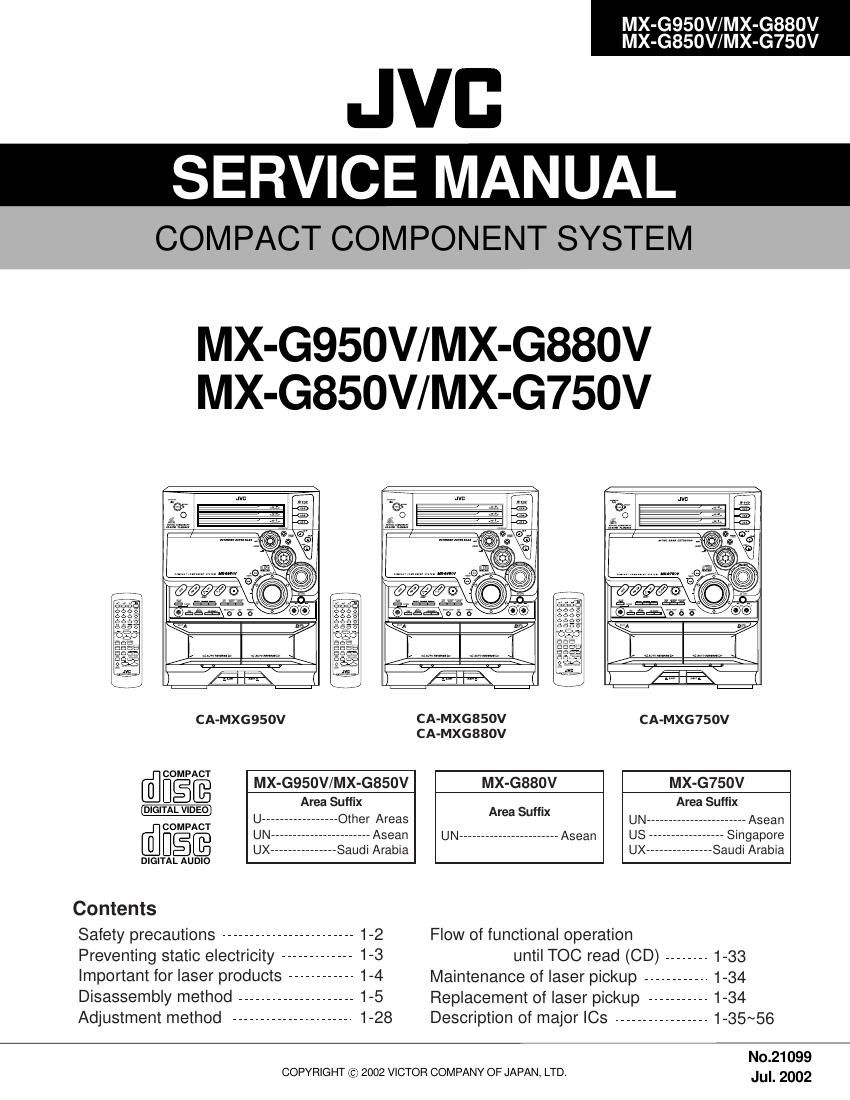Jvc MXG 850 V Service Manual
This is the 171 pages manual for Jvc MXG 850 V Service Manual.
Read or download the pdf for free. If you want to contribute, please upload pdfs to audioservicemanuals.wetransfer.com.
Page: 1 / 171
